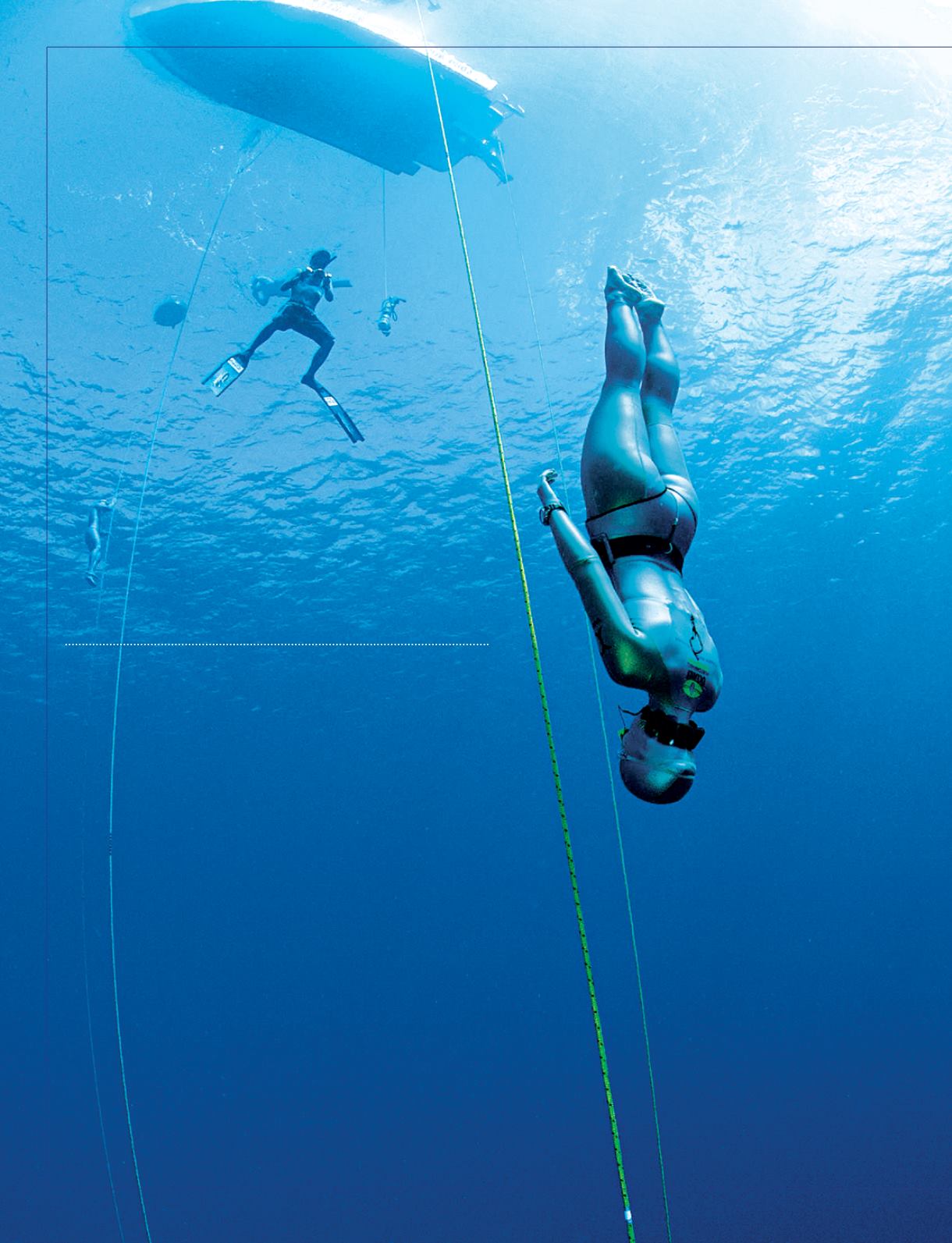
88
|
FALL 2013
B
ob Talbot’s movie Ocean Men: Extreme Dive (2001),
featuring Umberto Pelizzari and Pipin Ferreras, was filmed
back when competitive freediving was fairly new. In this
visually stunning and inspiring movie, Pelizzari set the
constant-ballast world record with a dive to 262 feet (80 meters),
while Ferreras did a no-limits dive to 531 feet (162 meters). Those
may sound like unbelievable depths, but wait until you hear what
those records are today.
I started freediving in 2000, when proper freediving gear was
hard to come by in North America — particularly for women.
Now the gear is not only readily available but also has evolved
greatly. You can get a wetsuit so flexible it’s like wearing an extra
layer of fat for warmth. For improved efficiency, most athletes
choose monofins over traditional fins. Mainstream dive computers
now come standard with a freedive mode.
In addition to advances in gear, athletes are benefitting from
improvements in training techniques. Companies such as
Performance Freediving International (PFI) send instructors all over
the world to teach people to freedive deeper, longer and more safely.
The way freedivers train has changed a lot since 2000. Today
a student who comes into an intermediate course doing 20- to
40-foot dives and breath holds of one to one and a half minutes
will leave four days later diving to more than 100 feet and doing
breath holds of four to five minutes. Advances in training and gear
have helped take freediving to a whole new level.
Mandy-Rae Krack on her 164-foot
(50-meter) constant weight
no fins world-record dive.
The World of
Competitive
Freediving
B y M a n d y - R a e K r a c k
COURTNEY PLATT


